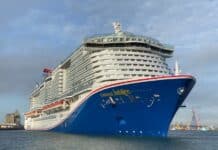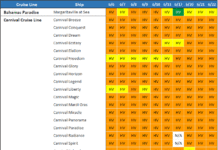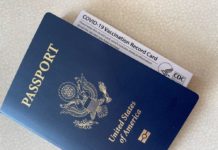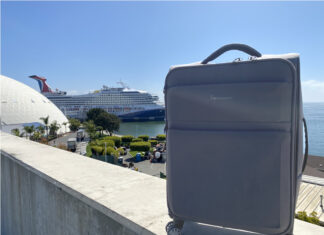The health crisis seems like a bad dream that just won’t end. Two years after the start of the pandemic, the world continues to grapple with cases and the upheaval they cause.
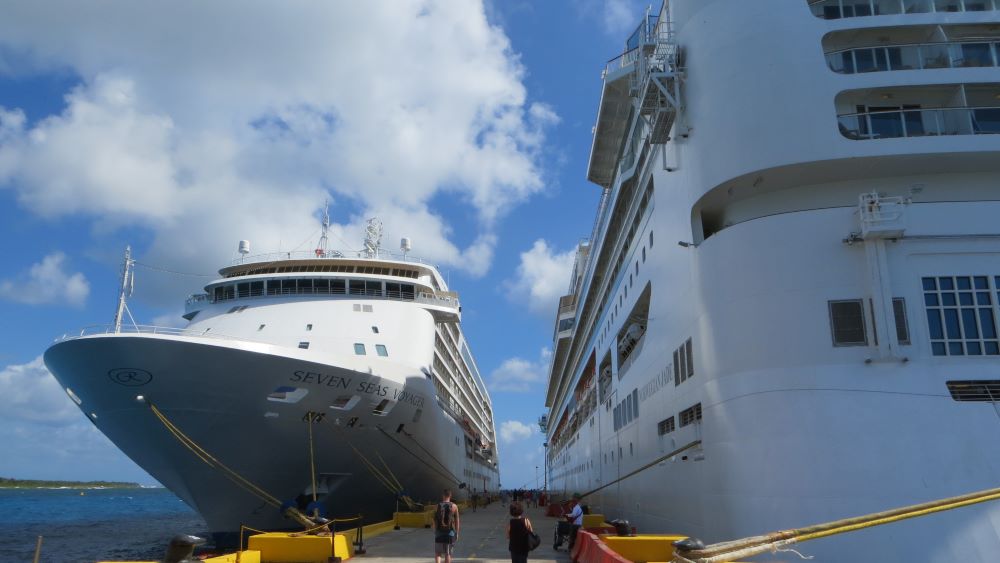
Nowhere is that more evident than with cruising. The entire industry was paused in March 2020, not making its return in the United States until more than a year later in June 2021.
For months after their return, cruise lines were able to handle cases that did pop up. The use of vaccines, testing, and contract tracing limited spread on ships.
Between June 26, 2021 and October 21, there were only 1,359 cases on ships, according to the CDC. That comes out to about 12 cases per day across more than a hundred ships and tens of thousands of crew and passengers.
Then, of course, Omicron began to spread. Seemingly overnight cases around the world spiked and cruise ships were also hit. The variant is more transmissible and more evasive of vaccines. According to CDC Director Dr. Rochelle Walensky, cruise ships saw a “30-fold increase” in cases recently due to Omicron.
While there have been a number of headlines regarding cases on ships, nowhere is the impact more obvious than with the CDC’s daily color status reports. Ships that are given “green” status have no potential cases, while “orange” or “yellow” ships mean likely cases in the past seven days.
On this report, the vast majority of ships are either yellow or orange at the moment. As of the latest update, 98 of the 107 ships tracked by the CDC were a color other than green.
But if you thought that cruise lines were just standing still during this wave, then you’d be mistaken. In fact, lines are making a number of changes and adjustments to do what’s possible to minimize cases and keep passengers and crew healthy.
Maintaining — and Strengthening — Protocols
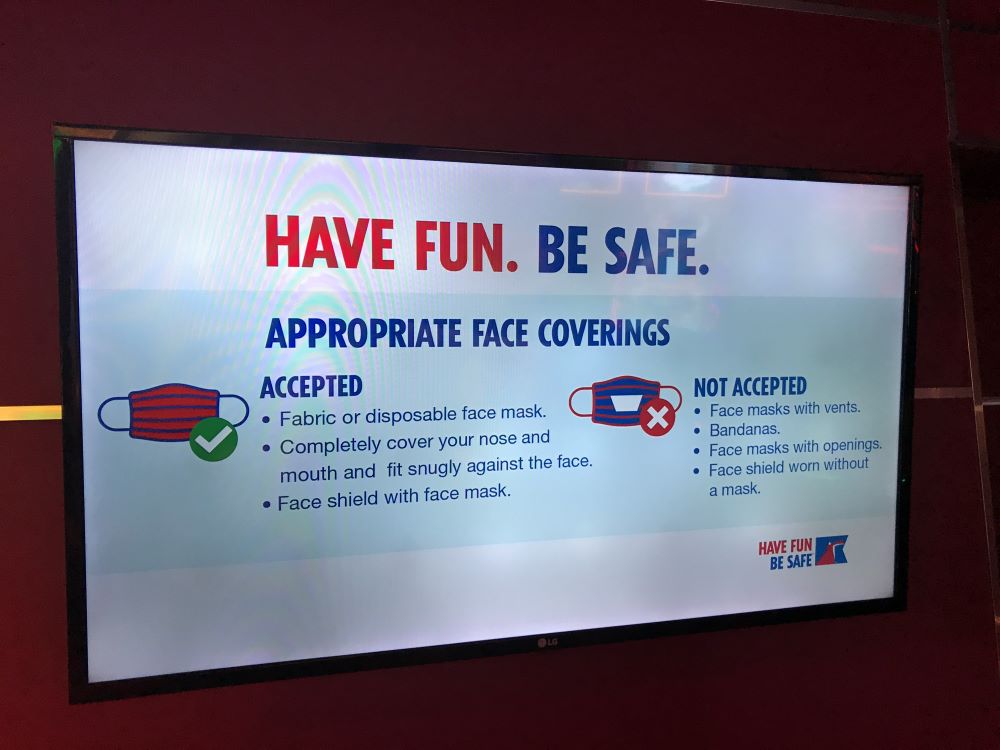
When cruising returned, it did so under drastically new health protocols. In addition to changes made behind-the-scenes like improved ventilation and increased sanitation, passenger-facing rules like vaccine requirements and testing before boarding were installed as cornerstones.
According to Cruise Lines International Association (CLIA) — the industry’s trade group — cruise lines currently administer nearly 10 million tests per week, which they say is 21x the testing rate in the United States.
These protocols worked well during the Delta variant, but have faced a challenge due to Omicron.
In response to rising cases, cruise lines have kept protocols in place and further strengthened them. This includes moves like Norwegian Cruise Line maintaining testing at the terminal instead of requiring passengers to test before arriving. Mask requirements have been put in place for indoor areas of ships — even for vaccinated passengers. Smoking has been eliminated from casinos on many ships to reduce unmasked time indoors.
For the amount of criticism cruise ships receive during the pandemic, they actually offer some of the most extensive health requirements of any group setting.
Continuing With Voluntary CDC Orders
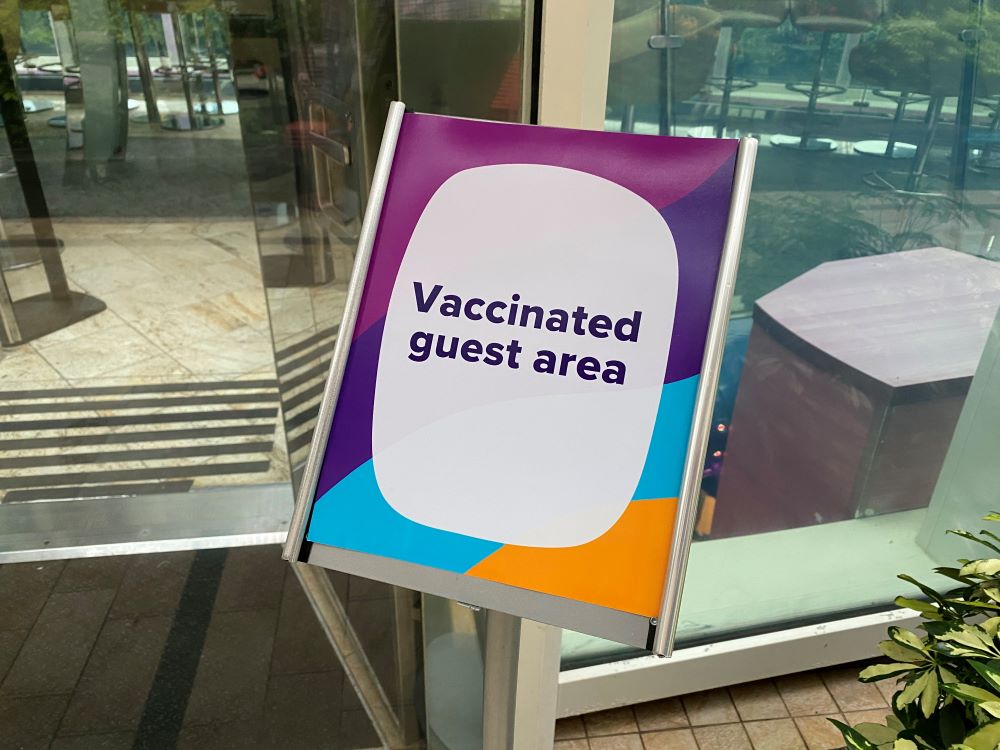
January 15, 2022 marked an important milestone in cruising, although you likely won’t notice it on a ship.
On that day, the CDC’s Conditional Sailing Order (CSO) — the order laying out the rules that cruise lines must abide by to sail — became voluntary. Technically the order had been voluntary for ships sailing from Florida since July 2021. This change, however, moved the CSO to voluntary status from all U.S. ports.
The result of the change? So far, it seems very little. As cruise lines look to combat cases, the industry appears to be continuing to follow the protocols.
When we contacted CLIA, a spokesperson told Cruzely, “The voluntary program or not, the fact remains that the CDC are still the regulators of the cruise industry here in the U.S. and we will continue to work closely with them in the interest of public health.”
“While our ocean-going member cruise lines do defer to the CDC’s guidance here in the U.S., I can tell you that our enhanced protocols are here to stay for the foreseeable future,” the spokesperson added.
Norwegian Cruise Line Holdings announced specifically it will continue to “opt-in” to the protocols laid out by the CSO.
In fact, since the change the CDC has said that any ship deciding not to participate in the voluntary protocols would be labeled as “gray” status in its daily color status report. As of now, there are no ships with this color.
Canceling Cruises
There is no question that the most drastic move a cruise line can make is to cancel a trip. It causes major disruption to its business, throws passengers for a loop, and makes headlines. Even so, with cases rising, sometimes a cancellation is what’s needed. Cruise lines have taken this step.
Cruise lines, including major names like Norwegian and Royal Caribbean, among others, have paused some sailings amid the peak of the outbreak. They have even canceled cruises in the middle of sailing, opting to return home.
Now, we aren’t privy to all the reasons that go into a cancellation, which might vary from being refused ports of calls to having a large amount of crew test positive to simply deeming it in the interest of public health. However, that doesn’t take away from the fact that cruise lines are making this major move that largely hasn’t been seen elsewhere in the travel and leisure industry.
Lenient Cancellation Policies for Passengers
One of the biggest steps that cruise lines have made to keep cases off ships is one that starts well before the ship ever leaves the dock. During this pandemic, cruise lines have become much more flexible in cancellation policies and that continues during the Omicron spike.
Prior to the pandemic cruise line cancellation penalties were strict. Typically if you canceled fewer than 60-90 days before a cruise, then you could face a penalty of your entire cruise fare. Obviously if someone is feeling sick a few days before a cruise, then it’s a bad idea to have them on the ship. Even so, considering the money at stake under normal circumstances, many people might opt to cruise anyway.
In response, cruise lines have drastically changed the cancellation policies and extended these policies during Omicron. Perhaps the most lenient are those from lines including Royal Caribbean, MSC, and Celebrity. These cruise lines allow cancellations up to 48 hours before a cruise with no penalty.
That not only helps give some assurance to passengers booking trips, but it also means potentially sick passengers will not feel torn between canceling or losing out on their vacation fare. (Cruise lines also offer credit for the voyage if a passenger tests positive prior to sailing.)
Expect These Steps to Continue Going Forward
There’s no argument that the spike in Omicron has thrown down another hurdle for cruising. And if there are cases on land there can be cases on ships, even with protocols. Data released by the CDC shows that to be the case, especially with the Omicron variant.
Even so, cruise lines are arguably doing more to combat the virus on their ships than any other form of travel. Don’t expect that to change as long as cases remain high on land.

